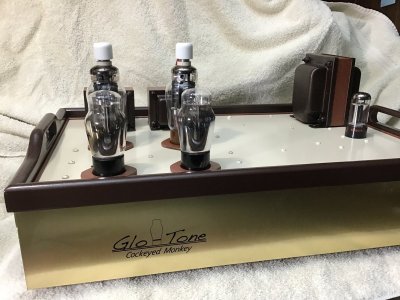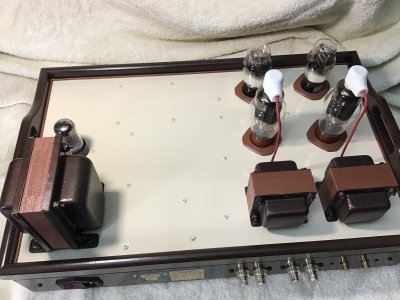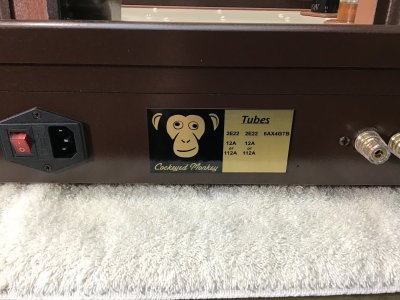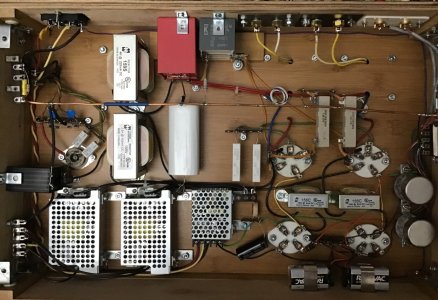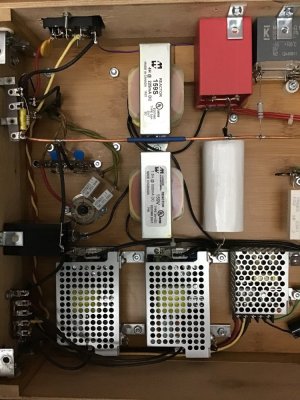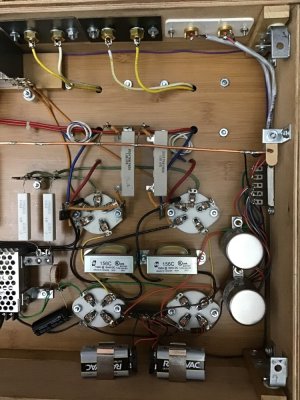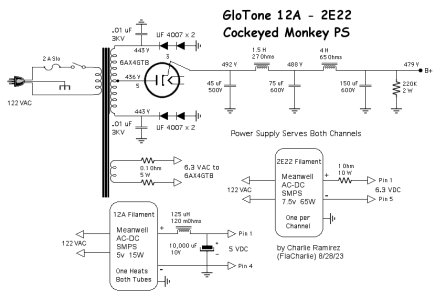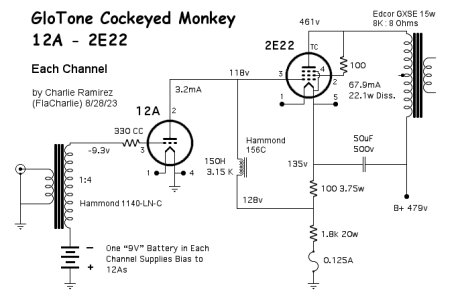FlaCharlie
Member
So here's my latest DIY amp, the Cockeyed Monkey . . .
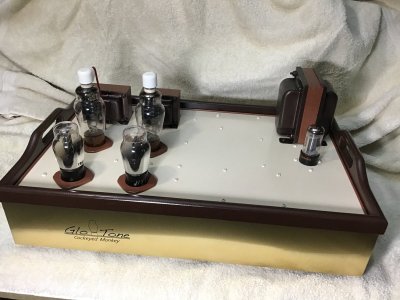
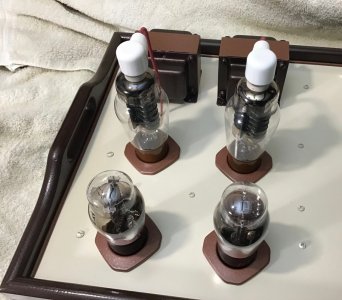
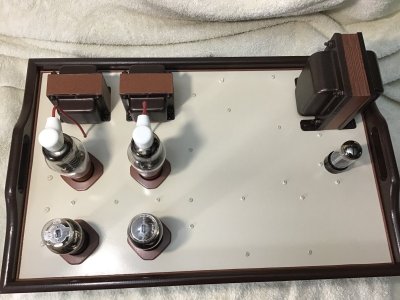
I always like to try some things that are "new to me" in my builds and this one has several elements that I've been meaning to try for a while.
I had never built a directly coupled amp so I figured it was time. I decided on using this particular design after reading a comment by someone who had built many 300B amps and considered this circuit to be the best he had ever tried. Although everyone's preferences are different, I figured it must be pretty decent. It's the popular "Monkey" design, variations of which are also known as Direct Reactance Drive (DRD) and the Free Lunch.
My technical understanding of it is quite limited as I'm mostly a copy and paste builder not an engineer or designer. If you're interested in the history and technical aspects of this circuit there is plenty of information online. It's a proven design that's been popular with DIY builders for over 20 years now and has been used with many different types of tubes. Some claim that the design actually originated with Western Electric.
The power supply is a design that was promoted by Eli Duttman who used to post over on Audio Asylum and DIY Audio. Since the diodes are arranged in an uncommon manner he called it the Cockeyed Bridge. I love to meander down the "road less travelled".
In this version SS diodes handle the rectification and an indirectly heated rectifier tube is used purely as a soft start device. I'm using a common TV damper diode, the 6AX4GTB. If you've ever come across a pile of old TV tubes there are likely some damper diodes in there somewhere. I had accumulated several over the years.
Damper diodes have a reputation for being tough and reliable. They are similar to the 5AR4 in that they have low voltage drops and ramp up voltage very slowly. They are also cheap. The big dealers list NOS 6AX4s for $3 to $4.
Obviously, this combination of circuits had to be called the Cockeyed Monkey.
More details, pics and schematics to follow . . .



I always like to try some things that are "new to me" in my builds and this one has several elements that I've been meaning to try for a while.
I had never built a directly coupled amp so I figured it was time. I decided on using this particular design after reading a comment by someone who had built many 300B amps and considered this circuit to be the best he had ever tried. Although everyone's preferences are different, I figured it must be pretty decent. It's the popular "Monkey" design, variations of which are also known as Direct Reactance Drive (DRD) and the Free Lunch.
My technical understanding of it is quite limited as I'm mostly a copy and paste builder not an engineer or designer. If you're interested in the history and technical aspects of this circuit there is plenty of information online. It's a proven design that's been popular with DIY builders for over 20 years now and has been used with many different types of tubes. Some claim that the design actually originated with Western Electric.
The power supply is a design that was promoted by Eli Duttman who used to post over on Audio Asylum and DIY Audio. Since the diodes are arranged in an uncommon manner he called it the Cockeyed Bridge. I love to meander down the "road less travelled".
In this version SS diodes handle the rectification and an indirectly heated rectifier tube is used purely as a soft start device. I'm using a common TV damper diode, the 6AX4GTB. If you've ever come across a pile of old TV tubes there are likely some damper diodes in there somewhere. I had accumulated several over the years.
Damper diodes have a reputation for being tough and reliable. They are similar to the 5AR4 in that they have low voltage drops and ramp up voltage very slowly. They are also cheap. The big dealers list NOS 6AX4s for $3 to $4.
Obviously, this combination of circuits had to be called the Cockeyed Monkey.
More details, pics and schematics to follow . . .


